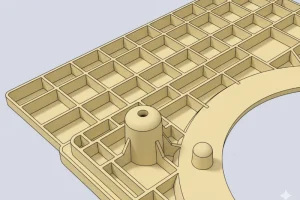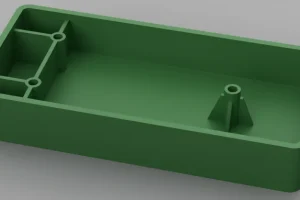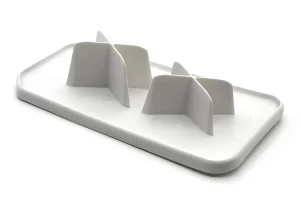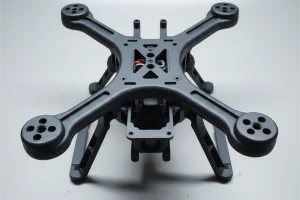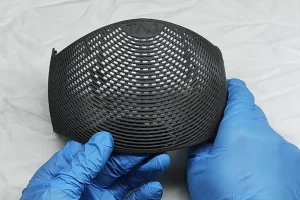Plastic recycling is important for the environment. It reduces the use of natural resources and conserves energy. It also decreases the number of recycled plastics that are produced from scratch.
In addition, it reduces greenhouse gasses. Plastic injection molded products can be recycled, and there is a number at the bottom.
The grade of plastic use is mainly distinguished by the number below (it is a triangle with an arrow, and there is a number inside the triangle).

“No. 1” PET
It is safe to drink cold or frozen beverages from mineral water and carbonated beverage bottles, but it’s not a good idea to use them for warm drinks.
Too much heat can cause the bottle material – plastic No 1- to deform and release DEHP, which is an unhealthy carcinogen.
After just 10 months of use, this toxic substance could be released into your drinking fluids so don’t reuse these types of containers; instead, dispose of them responsibly when they are empty to protect yourself against any potential health risks.
“No. 2” HDPE
To ensure the health and safety of your family, it’s best to avoid recycling previously-used containers for cleaning or bath products.
Even with a thorough cleaning, residues from these types of items can create an ideal environment for bacteria growth – so why take the risk? To be on the safe side: replace them instead!

“No. 3” PVC
This recycled material is at high risk of releasing toxic substances which can lead to health risks such as breast cancer and severe birth defects.
Therefore, it’s best not to purchase any containers with this mixed material for food packaging purposes – especially if they are exposed to extreme temperatures!

“No. 4” LDPE
Heating food with cling film or plastic industry wrap may not be the wisest choice.
These materials are usually heat resistant only up to 110°C, and heating them in a microwave oven can cause harmful substances from the plastics to dissolve into your food.
For safe consumption of microwaved meals, always remove any wrapping before putting them inside.
“No. 5” PP
When it comes to microwave oven lunch boxes, polypropylene (PP) is the preferred material due to its ability to withstand high and low temperatures.
However, standard PP lids cannot be microwaved in an oven without being removed first.
Furthermore, transparent crisp-style plastic cases should not even be considered for use inside a microwave – only specially marked containers are safe and reusable after proper cleaning has occurred. Be sure you exercise extreme care when selecting your next mealtime receptacle!
To ensure your food is safely heated, take extra caution when heating lunch boxes. The container itself may be made of a heat-resistant material such as No. 5 PP, but the lid contains PET which can’t withstand high temperatures and should not go into the microwave together with its box body!
To make sure you are operating by safety standards, don’t forget to remove this cover before placing it inside your oven!

“No. 6” PS
While bowl-packed instant noodle boxes and fast food containers may be an easy solution for takeout meals, they cannot withstand being cooked in a microwave oven.
Additionally, the polystyrene material used can easily decompose when exposed to high temperatures or certain acids – posing potential health risks.
To ensure safety during mealtime it is best to avoid packing hot foods into these disposable options.

“No. 7” Others
Many items one would find in the home, such as kettles and cups are made with PC plastic. While this material is popular due to its durability, there has been controversy surrounding it because of bisphenol A (BPA).
Lin Hanhua from City University noted that when 100 percent BPA converts into a plastic structure during production then products should be free of any residue.
But if some remain unconverted then potentially small amounts can enter food or drink – creating concern for consumers who use these materials in their homes.
When using plastics, special attention should be taken to safeguard against the release of BPA. As temperature increases, so does its rate and concentration – therefore it is wise not to use PC water bottles for hot beverages if your kettle carries a number 7 signifying that it contains such substances.
The following methods can reduce the risk:
For optimal use and safety, it is important to follow a few simple guidelines when using the kettle.
Make sure not to heat or wash with a dishwasher or dryer, keep away from direct sunlight, and always rinse before first-use with baking soda dissolved in warm water then allow for air drying at room temperature.
If any visible damage appears on the container’s surface such as tiny crevices where bacteria can accumulate – discontinue use immediately.

Conclusions
Injection molded plastics have the potential to be recycled, but due to their differing compositions and environments of use it’s important that they are kept separate.
Raw materials with a number five or lower must not be reused as these can produce harmful substances after an extended period of time -especially recycle plastic bottles (No. 1) degenerate when exposed oil and vinegar over 10 months releasing toxins in the process.


